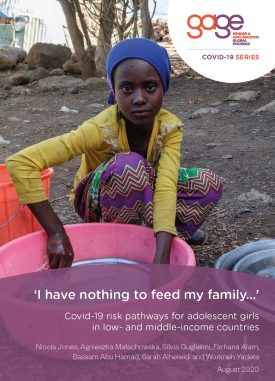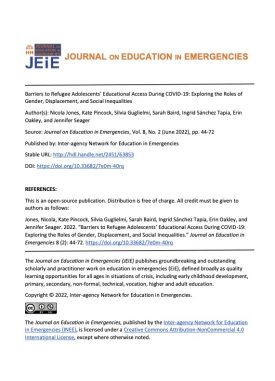Adolescents globally have been negatively affected by the covid-19 pandemic through multiple pathways. As well as the effects of contracting the disease (either themselves or a family member), adolescents have experienced increased household poverty, closure of schools and other key services, mobility restrictions, and social isolation, which can manifest in symptoms such as depression and anxiety with longer term effects on wellbeing. For adolescents with disabilities, who were already experiencing disadvantage, the response to the pandemic magnified pre-existing challenges in accessing services and highlighted social discrimination towards people with disabilities within the family, community, and policy arena. Although an estimated 161 million adolescents are living with disabilities globally, covid-19 policies have given little attention to their experiences and needs during the pandemic, and concerns have been expressed about their exclusion from broader global health and social protection agendas. This is particularly worrying given that adolescents with disabilities are at greater risk of severe effects from covid-19 and poor outcomes after infection because of the high prevalence of poor nutrition and underlying health conditions in this group. To avoid adolescents with disabilities being further disadvantaged, they need to be considered as a priority cohort within post-pandemic recovery action plans and given greater emphasis in future pandemic responses. Intentional action is the only way to compensate for the disrupted learning and development opportunities that many young people with disabilities faced during the pandemic and to secure brighter health, education, and psychosocial trajectories so that we meet the collective global commitments to “leave no one behind” set out in the 2030 sustainable development agenda.
Suggested citation
Creating a better post-pandemic future for adolescents with disabilities.’


